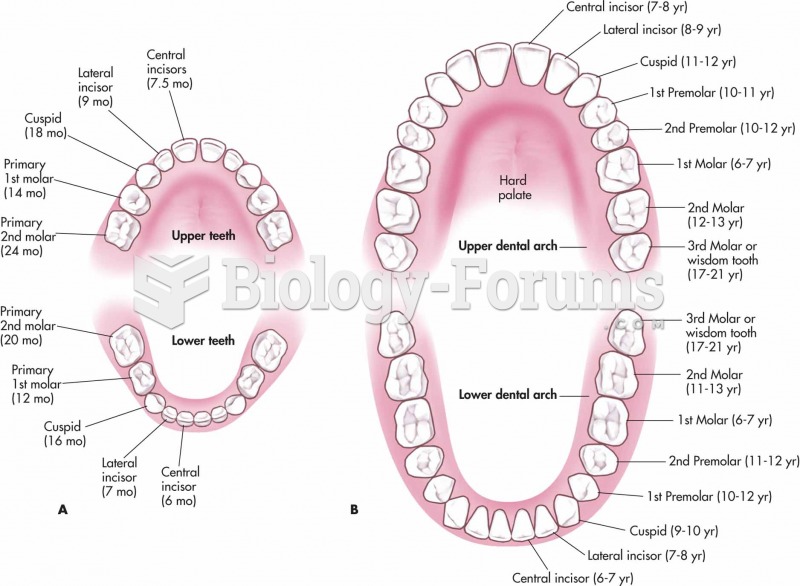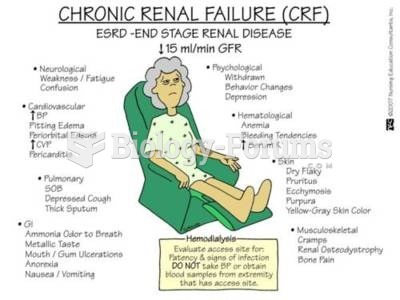Answer to Question 1
Henry has anemia of deficient red blood cell production as a result of his chronic renal failure (or chronic disease anemia). The chronic renal failure causes a reduction in erythropoietin production. Furthermore, increased serum levels of nitrogen and uremic toxins interfere with erythropoietin activity and red blood cell survival. On a smear, the red blood cells would appear normocytic and normochromic.
Chronic disease anemia involves a decrease in circulating erythrocytes and oxygen-carrying capacity of the blood. As a result, tissue hypoxia ensues and creates the symptoms of weakness, fatigue, and dyspnea. Central nervous system hypoxia leads to headaches and dizziness. In the elderly individual, cognitive impairment and depression are also indications of hypoxic change in the central nervous system.
There is an increased production of 2,3-DPG by erythrocytes in an attempt to lower hemoglobin affinity with oxygen. The result is that oxygen is more readily released by red blood cells at areas where it is needed most. This is evidenced by a shift to the right on the oxygen-hemoglobin dissociation curve.
Answer to Question 2
According to the law of Laplace, the greater the pressure change between two ends of a vessel, the greater the blood flow. A weaker pressure differential decreases blood flow. A very small change in vessel radius has a powerful effect on the movement of blood, and the relationship is inversely proportional: a decrease in vessel radius increases blood flow, and an increased radius decreases flow. Because blood flow is determined by PVR and CO, Bertha's heart rate (and therefore CO) would increase to compensate for the hypotension she experienced when she stood up.
Venous circulation is maintained by a variety of mechanisms. Valves exist in the veins of the lower extremities to resist retrograde flow and pooling. Skeletal muscle lies in close proximity to veins and helps to move venous blood. Finally, low intrathoracic and intra-abdominal pressures assist to pull venous blood from the lower extremities to the heart.
Capillary fluid pressure (or hydrostatic pressure) is influenced by gravity and is increased by the weight of blood in the vascular column during standing. When recumbent, blood vessels lie at the level of the heart, and hydrostatic pressure is therefore low.







